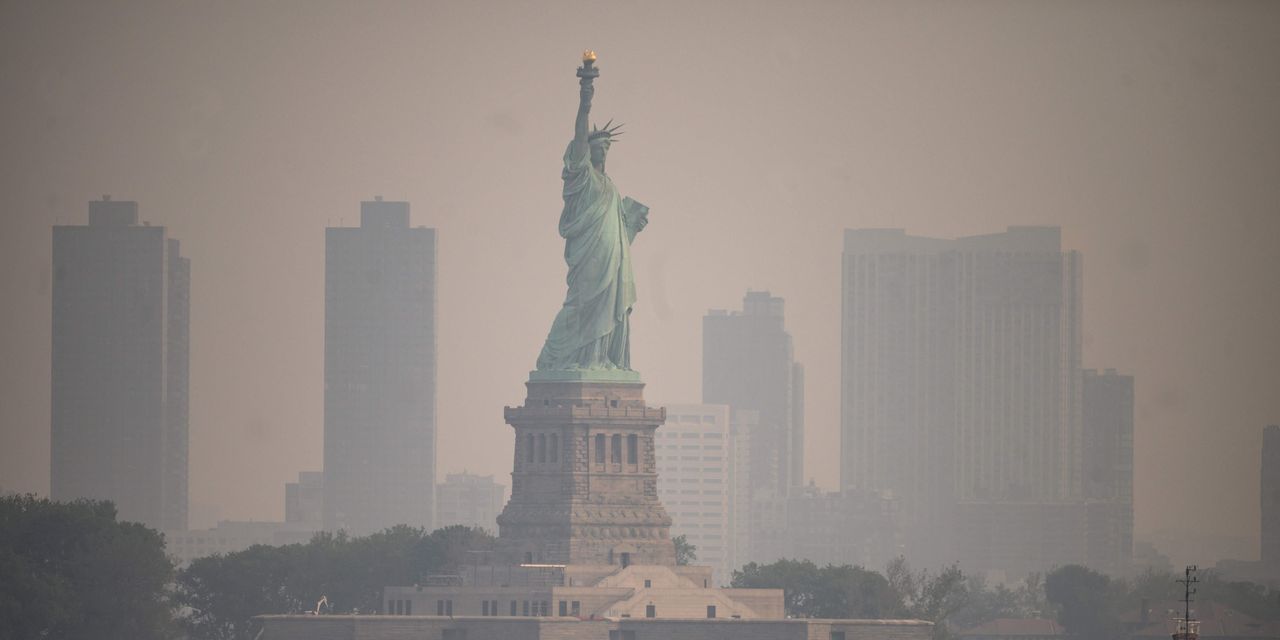Smoke clouds from the wildfires in Canada have engulfed New York City — and large parts of the Northeast — leaving a sinister haze and an unwelcome smell of ash. As someone from Singapore who regularly experienced haze growing up in the city-state, I immediately knew what I needed to do to adapt.
I’m sure many Californians may have the same reaction, having endured multiple wildfires – and smoke — over the last few years.
Growing up in Singapore, I experienced smoke haze caused by forest fires on a frequent basis. While the city seems to have escaped much of it over the pandemic years, the government recently warned that the haze may make a return in 2023, according to local news outlet Channel NewsAsia.
Unlike the wildfire in Canada, which was caused by dry conditions and warm temperatures, the forest fires in Singapore are a result of open burning which some people use to clear land for agricultural uses. One of the more interesting ways Singapore has addressed the haze is by using aircrafts to seed clouds to induce rain. You can read how a local outlet, AsiaOne, described that process here.
But back to the wildfire smoke. When I stepped out of my apartment this week and into the outside world for an errand, I was reminded of those ash clouds of my childhood. The smell was ridiculously strong.
I posted a picture on social media of how the New York City skyline was engulfed in smoke, to which a family member replied, “As yes, June and haze, can’t let you forget Singapore.” Sometimes, the haze was deemed hazardous by official agencies, and other times labeled unhealthy for the general population or for those who were more vulnerable to respiratory illnesses.
My first reaction upon returning home was to switch the air purifier on, and make sure all stoves and heating appliances were off to keep my apartment cool, and maintain as much fresh air as possible.
So here’s my Singapore/New York plan of action for ash clouds:
Take those N95 masks back out. I found N95 masks in almost every bag that I own thanks to COVID-19, which was very useful when I had to duck outside on Wednesday morning. Polluted air can irritate your eyes, throat, and even skin, according to one medical advisor at Mount Elizabeth Hospital in Singapore. Normal surgical masks don’t work, they stress, because they don’t offer protection against polluted air.
Keep kids indoors. Minimize outdoor activity, particularly for kids and other vulnerable groups. I can already feel my throat get scratchy, and can say the same for my child who has been coughing more. One pediatrician’s office emailed me saying that there’s an uptick in parents calling out of concern, and they were offering virtual visits. Meanwhile, many outdoor school events have been rescheduled to be indoors to prevent prolonged exposure to the smoke.
Drink water. The best way to beat the dry air is to increase your water intake. Drinking water helps you flush out toxins absorbed by your skin and lungs, the Mount Elizabeth advisor said. Another novel suggestion: She even recommended putting on moisturizer with SPF to prevent skin from getting irritated.
Use an air purifier. Our air purifier, which we bought early this year, has become the main character in our home. Air purifiers will help to make sure your air indoors is fresh. You should also close your windows to limit polluted air from getting into your home. A humidifier is another major piece of equipment you can roll out, because it will help keep your environment nice and moist as the air gets dry. Consider these five things before buying a purifier.
Don’t go overboard with smoke-inducing activities. Refrain from burning candles and creating smoke inside your home. Also, don’t go crazy with cooking, frying food that causes smoke which pollutes your environment.
Watch that vacuum. Avoid vacuuming your carpets, one doctor interviewed by a local news outlet King 5 News said in 2018, because “vacuuming can kick up particulate matter, potentially making unhealthy air even worse.”
Check your air-conditioning system. If you have a central heating and air conditioning system, see if it takes in fresh air or takes in air from outdoors. The U.S. Environmental Protection Agency warned that if people have an “evaporative cooler” or a portable AC that is vented out of a window, avoid using them in smoky conditions as they will likely bring in smoke into the home.
The National Oceanic and Atmospheric Administration said last year: “Research shows that changes in climate create warmer, drier conditions, leading to longer and more active fire seasons. Increases in temperatures and the thirst of the atmosphere due to human-caused climate change have increased [the] aridity of forest fuels during the fire season.”
Unfortunately, the smoke clouds that became a not-exactly rare event during my childhood in Singapore and what millions of Americans along the Northeast have experienced this week may become a more regular event in the U.S., as millions of Californians have discovered in recent years.
Read the full article here













